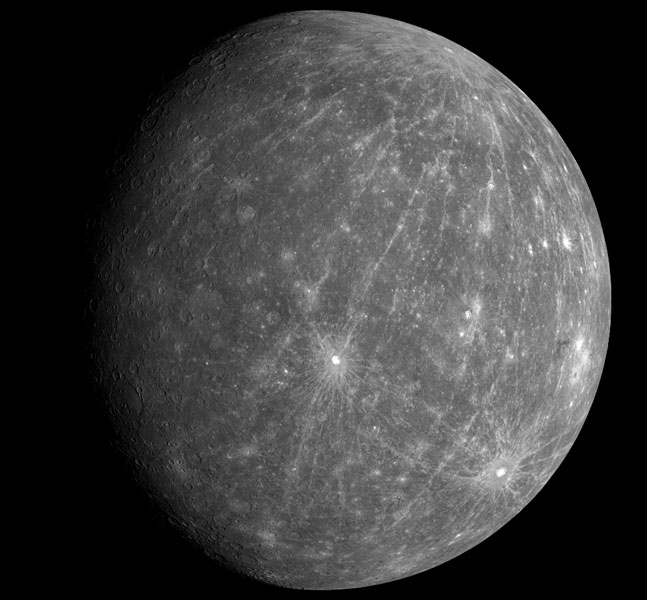
the angel that spins nearest the Sun
— That Hideous Strength, C. S. Lewis
Mercury is the smallest planet (at least the smallest undisputed planet since Pluto's demotion to "dwarf planet").
Mercury is the planet that moves fastest against the background of the stars, and of all the planets known to pre-modern astronomy, it is the hardest to see, often lost in the glare of the Sun. So it was associated with things fast, tricky, sneaky. The gods associated with it have something of the trickster about them, or at least cleverness— Nebo, Thoth, Hermes, Mercury, Odin.
Wednesday is named after this planet, being Woden's Day (Odin's Day). You can see this in the French name, Mercredi, or the Spanish, Miéroles.
Mercury is the only planet to have an element named after it, a strange and tricky stuff, a liquid metal.
Mercury has not figured strongly in science fiction. Writers often mention mines (all that metal ore) or a solar observatory there. E. R. R. Eddison set his fantasy The Worm Ouroborous on Mercury, but took no notice of the astronomy and appeared to forget about the planet as soon as he mentioned it. In earlier SF, Mercury was pictured as a one-face world, one side always day, the other always night, following the astronomy of the time.
Mercury is still hard to observe, and it was only in 1965 that radio astronomers bounced radar signals off the planet and discovered its rotation. It has been visited by only two probes, Mariner 10 in 1974 and MESSENGER in 2006.
Deviations in Mercury's orbit were the first evidence supporting Einstein's theory of general relativity over Newton's theory of gravitation.
On to Venus
Return to Gallery of Planets
Return to Introduction to Essays
Return to Wind Off the Hilltop
Copyright © Earl Wajenberg, 2012